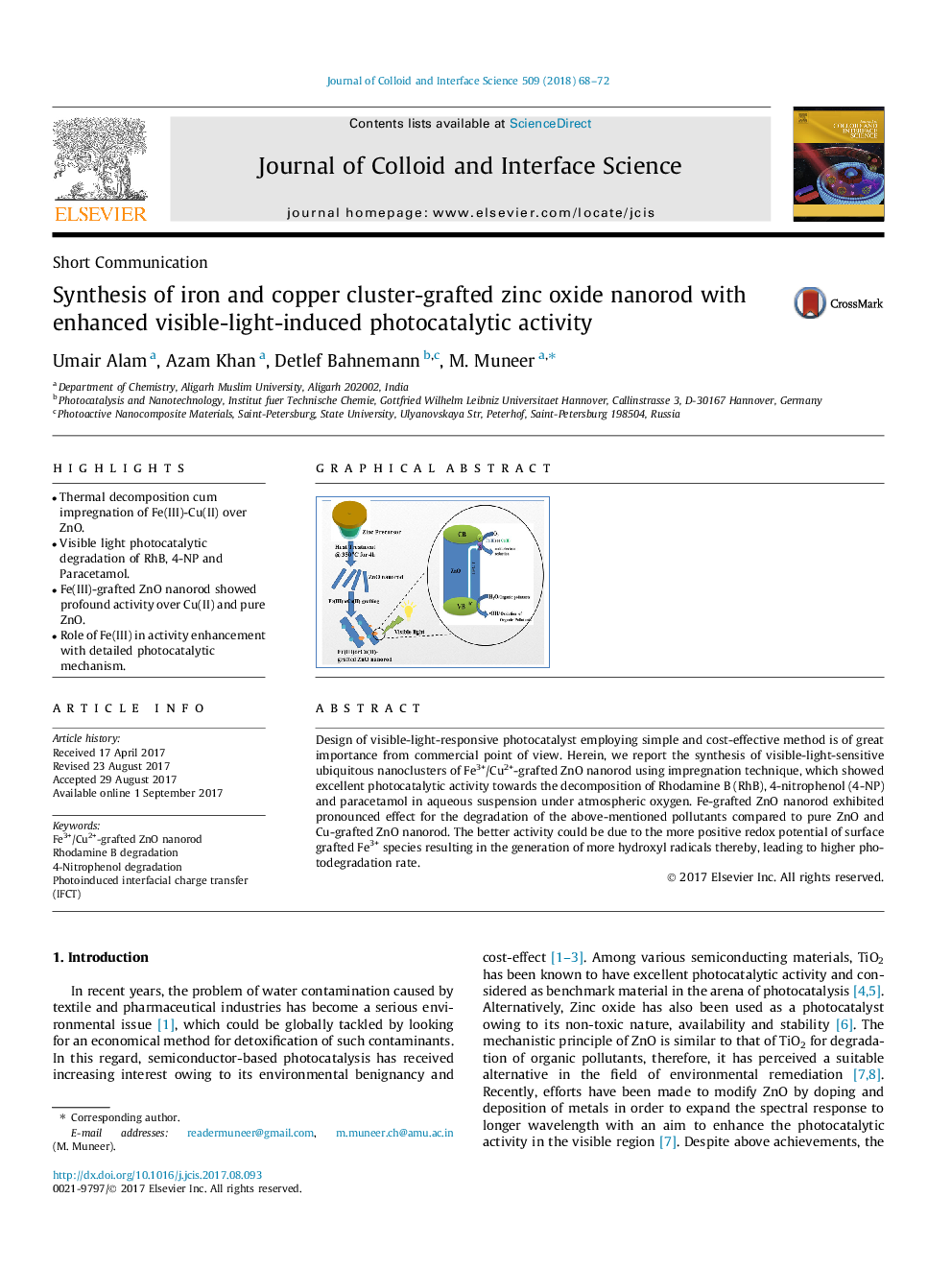| Article ID | Journal | Published Year | Pages | File Type |
|---|---|---|---|---|
| 4984274 | Journal of Colloid and Interface Science | 2018 | 5 Pages |
â¢Thermal decomposition cum impregnation of Fe(III)-Cu(II) over ZnO.â¢Visible light photocatalytic degradation of RhB, 4-NP and Paracetamol.â¢Fe(III)-grafted ZnO nanorod showed profound activity over Cu(II) and pure ZnO.â¢Role of Fe(III) in activity enhancement with detailed photocatalytic mechanism.
Design of visible-light-responsive photocatalyst employing simple and cost-effective method is of great importance from commercial point of view. Herein, we report the synthesis of visible-light-sensitive ubiquitous nanoclusters of Fe3+/Cu2+-grafted ZnO nanorod using impregnation technique, which showed excellent photocatalytic activity towards the decomposition of Rhodamine B (RhB), 4-nitrophenol (4-NP) and paracetamol in aqueous suspension under atmospheric oxygen. Fe-grafted ZnO nanorod exhibited pronounced effect for the degradation of the above-mentioned pollutants compared to pure ZnO and Cu-grafted ZnO nanorod. The better activity could be due to the more positive redox potential of surface grafted Fe3+ species resulting in the generation of more hydroxyl radicals thereby, leading to higher photodegradation rate.
Graphical abstractDownload high-res image (144KB)Download full-size image
